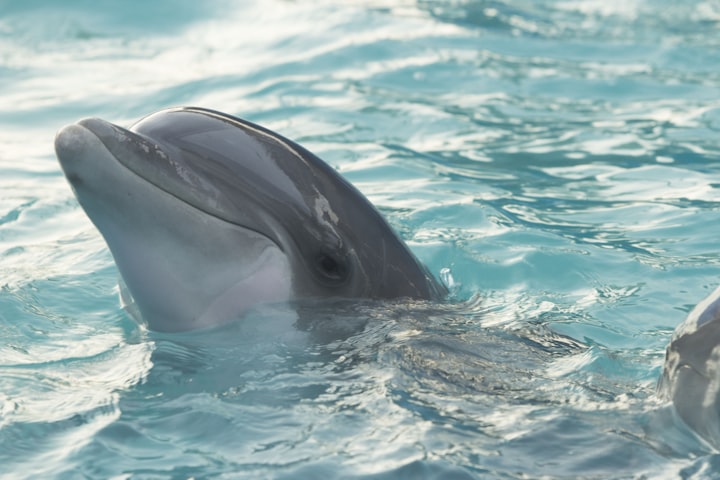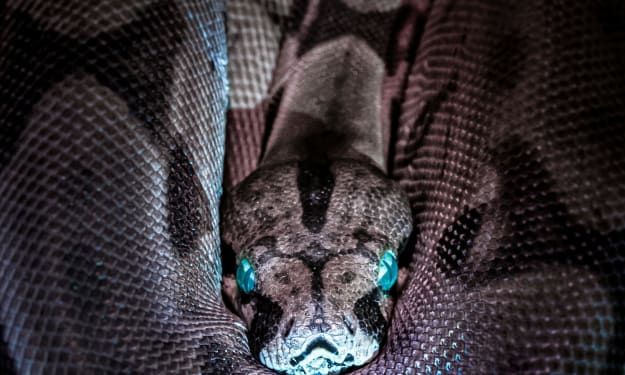National Aquarium’s “Sanctuary” Plan Problematic?
National Aquarium’s 8-year-old plan to move its bottlenose dolphin pod to a yet-to-be-built “sanctuary” is raising concerns about the potential problems that may come ahead if all goes as planned.

The National Aquarium in Baltimore has been a home for Atlantic bottlenose dolphins since the 1980s. It currently serves as a home to six dolphins who take part in daily training and feeding sessions six times a day. Lessons and knowledge are both taught and tested with rewards given to them by their trainers at the end of each session. Yet, the trainers are part of their pod. Since 2016, the trainers have been preparing them for life in a marine sanctuary that would be located somewhere in the Caribbean. However, there is one problem: the sanctuary has yet to be built, and plans for its construction seemed mired in logistical problems.
While some activists and their allies think a 100 acre sea pen might be a great way to “improve” the welfare of the aquarium-born dolphins who have spent their entire lives in pool-based habitats, there are others who insist that the animals are likely better off in a consistent pool environment and don’t believe that sanctuary models are the best possible housing scenarios for these individuals. Enter Jason Bruck, a long-time dolphin researcher and Assistant Professor of Biology at Stephen F. Austin State University in Texas. He argues that there is no research to show that dolphins who have never seen the ocean will necessarily thrive in expansive sea sanctuaries, which may overwhelm the animals in both space, sounds and variable conditions (Kugiya, 2024).
In January of this year, Bruck published an article in the journal Animals titled The Cetacean Sanctuary: A Sea of Unknowns. This paper questions the idea that a massive pen-based facility is beneficial to animal welfare. While the concept of housing cetaceans in netted sea pens a common practice for many accredited managed-care facilities, the animal-rights concept of them acting as “natural” alternatives to inland pool-based facilities is a relatively new concept that has gained popularity over the last few years (Bruck, 2024). This concept is born out of changing attitudes regarding the welfare of animals and a rise in social media where passions are stoked but nuanced conversation is lacking. Bruck argues that the revolution in welfare awareness is not something exclusive to online activists, but is also something that has occurred in zoos over the last few decades resulting in changes to zoos that have not been widely discussed or reported online (Bruck, 2024, Kugiya, 2024). Some of these changes at modern zoos and aquariums include the widespread use of enrichment in animal habitats, welfare monitoring and better health practices (Bruck, 2024).
Although many marine mammal facilities have made some incredible efforts to improve the care of their cetaceans, some members of the public remain unaware of these strides or insist, for philosophical reasons, that no progress can be enough. For some the only solution short of release is the creation of seaside sanctuaries that would serve as compromises between full release into natural habitats and pool enclosures (Bruck, 2024). In July 2023 representatives from the Whale Sanctuary Project, The SEA LIFE Beluga Sanctuary Project and the Baltimore Aquarium worked to develop unified standards for cetacean sanctuaries under the auspices of the Global Federation of Animal Sanctuaries (GFAS). The unified principles include no breeding, a decrease in public exposure to the animals, expansive enclosures, little-to-no focus on financial gain, and a reduction in interaction between the animals and their human caregivers (Bruck, 2024). Supporters of these sanctuaries could argue that putting a primary focus on basing the habitats around naturalism would ensure a high level of care and promote long-term welfare and survival for a sanctuary’s resident animals. Dr. Bruck pushes back cautioning these groups to consider the Naturism Fallacy: the idea that just because something is considered “natural” it is better.
In talking about the idea of sea pens acting as facilities that are in a natural setting, there are a few things that need to be looked at for consideration. For starters, the ocean is large, which can allow one to assume that cetaceans would want to thrive in large enclosures (Bruck, 2024). However, it doesn’t take into consideration that most cetaceans that currently live under human care don’t have any experience with an open ocean-based habitat, and the idea of expecting an animal that has been living in a pool-based habitat for most of their entire lives to just adapt to thrive in large spaces and not experience a scratch from the situation is just unrealistic (Bruck, 2024). There are so many questions about how they would or wouldn’t adjust to the change in the environment that need to be answered. While there are no GFAS guidelines that call for the release of cetaceans that were born under human care or have been in human care for some time, some cases of past release attempts may expect how animals that currently live in pools, lagoons, or current sea pen environments may react to expansive sanctuaries (Bruck, 2024). This is especially true when you consider the relation to their dependency on human caregivers.
When looking at cases that focused on introducing cetaceans into sea pens, short-term rehabilitation can lead to reintegration, but the ultimate success is often difficult to determine, because of a lack of long-term data (Bruck, 2024). For example, an experiment from the late 80s and early 90s showed that young dolphins released back into the wild successfully integrated with their native social pods after two years of living under human care, which highlighted the importance of calf rearing and juvenile presence for maintaining cetacean welfare (Bruck, 2024). Meanwhile, the Perth release in the 90s, called “The Welcome Home Project”, which involved captive animals and dependent calves showed the difficulties encountered by dolphins encountered during the release process. These difficulties included weight loss, failure to thrive, begging behaviors towards humans, and even calf loss. The release emphasized the powerful role of experience in driving cetacean behavior and cognition, which suggests that animals born under the care of man may not adapt well to large enclosures in sea pens (Bruck, 2024). The recent case of two female beluga whales transported from China to a sea pen in Iceland highlights the challenges and complexities of reintroducing captive cetaceans into a more natural environment. The belugas spent a significant amount of time in transition pools before being placed in the sea pen, and were moved back to the pools because of their progress and changing weather conditions (Bruck, 2024). These cases collectively show the dependency of cetaceans under human care and interaction, especially for those born in zoological settings. Learning history and human socialization play a crucial role, changing to the sea pens challenging and potentially stressful for the animals (Bruck, 2024).
When addressing the purpose that these sanctuaries would serve, supporters insist they would meet all the physical, psychological, and social needs of the animals in question by offering them a chance to live in larger, and more naturalistic habitats (Bruck, 2024). While this may emphasize the need to minimize stress and promote well-being, many modern zoos and aquariums have developed to put a lot of focus on improving animal habitats and enrichments that would encourage the animals to display the various behaviors that they would perform out in the wild (Bruck, 2024). In addition, activists who support the concept of sanctuaries also argue that they would be developed to rehabilitate animals with intentions to either release them back into the wild or provide long-term care for animals that cannot be released for various reasons. They also argue that sanctuaries would also focus on conservation and welfare which would serve as alternatives to the entertainment aspect of zoos and aquariums. Ironically, many modern zoological facilities prioritize public entertainment around conservation and conservation efforts Bruck, 2024).
Balancing the desire for natural environments in cetacean sanctuaries with the benefits of public education and the complexities of the human-animal bond presents a challenging puzzle (Bruck, 2024). While limiting or removing public interactions might seem ideal for stress reduction and natural behavior, it ignores the reality of cetaceans, particularly those born under human care, who display a persistent dependence on human interaction (Bruck, 2024). Restricting contact might not guarantee natural behavior, as learned begging habits can spread quickly and wild cetaceans can readily adapt to human feeding, potentially leading to harm.
De-emphasizing the human-animal bond in sanctuary standards, as proposed by Bruck, might not align with the best interests of these creatures. Providing larger spaces and reducing human contact might not erase the lasting impact humans have had on their behavior. Instead, experts must consider the individual histories of captive cetaceans and their potential welfare outcomes in sanctuaries (Bruck, 2024). Factors like the sanctuary's philosophy on human-animal relationships, the environment's size, and the animals' level of independence all play crucial roles in their well-being. Balancing increased behavioral choices and the challenges of managing pool-born animals is key (Bruck, 2024). Keiko the killer whale serves as a stark reminder of the enduring human-cetacean bond. His story underscores the importance of considering this bond when designing sanctuaries. Ultimately, finding the right balance between public education, natural environments, and the well-being of these intelligent creatures requires a nuanced approach that recognizes the complexities of their relationship with humans (Bruck, 2024).
Another one of the biggest criticisms of cetaceans sanctuaries is the idea that the breeding of cetaceans wouldn’t be allowed to breed and would require to segregate animals based on gender or have them go on birth control (Bruck, 2024). The problem with denying a species that’s sexual is that while data shows that animals often prefer the company of animals of the same gender, it’s more beneficial to have animals live in a pod that mixes both males and females under the same roof than it is to segregate them. This is because breeding and sexual behavior in cetaceans is important in many cetacean species, which includes bottlenose dolphins (Bruck, 2024). For example, females have active clitorises that researchers believe serve as a source of sexual pleasure while males establish social organizations that revolve around access to breeding females that often involve same-gender aggression that’s associated with larger male alliances (Bruck, 2024). Evidence of these aggressive interactions between males can be found on the many rake markings on their bodies. In zoological settings, it is common for male and female cetaceans to be housed separately in either mixed-gender or age groups that allow them to have physical contact with each other while also being able to communicate with them at the same time (Bruck, 2024). Although there are new studies that are looking into better ways to improve breeding programs and mixed-gender interactions through new, innovative methods, Bruck insists that more research needs to be established on how different housing methods affect animal welfare (Bruck, 2024).
While it’s been known that when cetaceans are housed in mixed groups, they end up displaying diverse sexual behavior showing little difference in aggression rates among them, the diversity in behavior among the animals increases when calves and juveniles are present. It highlights the importance of calf rearing and juvenile presence for maintaining the welfare of cetaceans in both the wild and in human care (Bruck, 2024). You first have the males who are interacting with other males or breeding with females who don't have calves on them and then, you have the adult females who are caring for nursing calves and juveniles who have just been weaned from nursing and are learning how to feed on solid foods from their mothers and other pod-mates. In addition, these juveniles are also learning how to look after their young siblings and cousins who are born into their pods, which can help them learn how to one day raise calves of their own. By denying cetaceans the right to breed, have, and raise calves in a more balanced pod with birth control, activists are potentially doing far more harm to these animals than good, considering the risks that birth control and segregation can have on these animals (Bruck, 2024).
One of the biggest concerns when discussing plans for cetacean sanctuaries has to do with fundraising. Because of the high demand that goes into caring for resident animals, cetacean sanctuaries are expensive endeavors (Bruck, 2024). This is because the more isolated the facility is from the shore, the more likely the costs of maintaining the pen are going to rise. Take Sea Life Center’s beluga sea pen for example, the monthly cost for caring for the two resident female whales is said to be around $45,000. This includes food, care, monitoring by the animal care team, maintenance and essential health checks from veterinarians (Bruck, 2024). Meanwhile, the annual cost to care for Keiko in Iceland prior to his controversial release in 2002 was said to be around $3 million, or in today’s dollars, $5.5 million. While keeping cetaceans under human care can cause resource funding to drain quicker than keeping most terrestrial mammals under human care, sea pen-styled housing is far more expensive than housing them in a pool-based facility (Bruck, 2024). On a side note, during a 2016 survey by the Animal Welfare Institute, it estimated that a sea pen that might house killer whales may cost around $5 million a year. While the National Aquarium in Baltimore might fund its potential sea pen for its bottlenose dolphin pod with its own resources, smaller organizations like The Whale Sanctuary Project and Ric O’Barry’s Dolphin Project are more likely to rely on donations (Bruck, 2024).
If funding is not enough to fully explain the criticism of sanctuaries, there’s also the worst-case scenario if these sanctuaries suffer financially during difficult times. If these sanctuaries were to run out of funds to where they end having to shut down, where would the animals go (Bruck, 2024)? Would they be able to move the animals that can be transferred to other facilities? Are local taxpayers expected to cover the costs in place of donor money? Will there still be active marine mammal facilities that will take those now homeless animals in? While funding challenges are common among animal sanctuaries, ones that involve house cetaceans require covering high costs and long-term planning that involves moving animals to other facilities if situations call for them (Bruck, 2024).
Another issue that surrounds these sanctuaries is their messaging. The messaging is often presented as being both uncomplicated and easy. However, there’s a potential that this type of messaging could end up being misleading to the public (Bruck, 2024). Sanctuaries are keeping animals in a captive setting and any promise that they may provide freedom is deceptive. The term “sanctuary” acts as a shield to justify poor animal treatment, both before and after placement (Bruck, 2024). The word is often biased to where the public may not critically assess whether sanctuaries can provide good animal welfare. The term “restoration” is more accurate than “restitution” to describe moving animals to natural environments (Bruck, 2024). Proper standards, such as GFAS accreditation, are crucial to evaluating sanctuaries just like how the Association of Zoos and Aquariums (AZA), the Alliance for Marine Mammal Parks and Aquariums (AMMPA), and the International Marine Animal Trainers Association (IMATA) are crucial for evaluating modern, well-managed zoos and aquariums (Bruck, 2024). Yet, the current guidelines that GFAS has in place may not adequately assess their value.
Bruck’s paper discusses the need that more research and experimentation needs to be determined to establish better standards for cetacean sanctuaries (Bruck, 2024). It emphasizes that focusing solely on the keeping of cetaceans in human care may compromise welfare and that sanctuaries should prioritize welfare first. The current GFAS standards lack a clear discussion of known and unknown factors related to sanctuaries (Bruck, 2024). They propose various research areas such as habitat presence tests, long-term birth control effects, and the impact of human presence and relationships on cetacean welfare. Bruck also highlights the importance of how studying cetaceans in human care utilize their environments and how they react to natural phenomena. He also suggests analyzing already existing zoo records to gain insights into effects of transferring cetaceans between different types of facilities (Bruck, 2024). He finally concludes by emphasizing the need to consider animal management techniques and timing in sanctuary design, as these factors significantly influence cetacean welfare (Bruck, 2024).
With that all being said in regards to concerns over the National Aquarium’s plan to move their dolphins to a “sanctuary” in the Caribbean, unless they are willing to make more effective changes and invest in research on how the sea pen wouldn’t risk their well-being, focus should be on improving the already existing pool-based dolphin habitat where they currently reside.
Sources:
Bruck, J. (2024, January 21). The Cetacean Sanctuary: A Sea of Unknowns. Animals, 14(2), 335. https://doi.org/10.3390/ani14020335
Kugiya, Hugo. “National Aquarium’s Dolphin Sanctuary Plan: Wave of the Future or Well-Intentioned Folly?” The Baltimore Banner, 4 Feb. 2024, www.thebaltimorebanner.com/community/climate-environment/national-aquarium-dolphin-sanctuary-plan-PURDSWX2AFAL7JS2HDCYN4VGX4/?fbclid=IwAR3H6wicTw7Gdw4gGyaA42VZ6sELkk8xhtOIqhBig3krHqp36ihN2Dk_Y9k_aem_AQ57PyQMiDqIts081aiYWw27ccvEPpn3T1wJ1YfO2LK53otR9o_TjR06r4lYO_XSY_M. Accessed 14 Feb. 2024.
About the Creator
Jenna Deedy
Zoo and Aquarium Professional, Educator, Cosplayer, Writer and B.A. in Psychology whose got a lot to share when it comes to animals, zoos, aquariums, conservation, and more.
Instagram: @jennacostadeedy






Comments
There are no comments for this story
Be the first to respond and start the conversation.